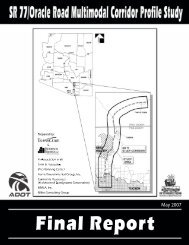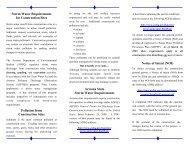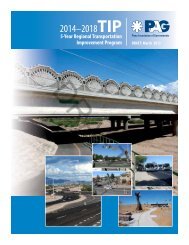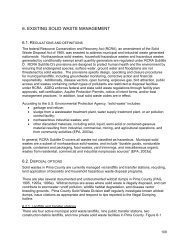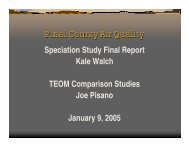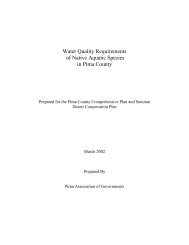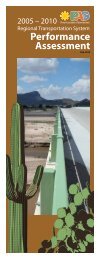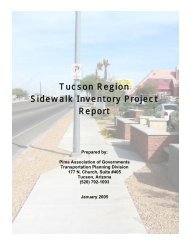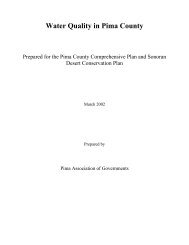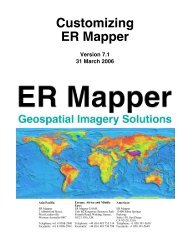Final Report - Pima Association of Governments
Final Report - Pima Association of Governments
Final Report - Pima Association of Governments
Create successful ePaper yourself
Turn your PDF publications into a flip-book with our unique Google optimized e-Paper software.
High Capacity Transit System Plan - <strong>Final</strong> <strong>Report</strong> June 2009<br />
Transit Technologies Analysis<br />
• Greater stop spacing<br />
• Improved information at stations and/or on board<br />
• Vehicles with enhanced design and capacity<br />
• An enhanced image (reflected in vehicles, stations, and other components <strong>of</strong> the service)<br />
Reducing Travel Time<br />
One <strong>of</strong> the main goals <strong>of</strong> BRT is to improve service by reducing travel times. The components <strong>of</strong><br />
travel time include time getting to and from the transit stop, time waiting for the transit vehicle,<br />
and time in the vehicle. If a transfer is needed, there is also additional walking and waiting time.<br />
A central concept in BRT planning is to give priority to transit vehicles in order to make them an<br />
attractive choice <strong>of</strong> transportation. Such techniques can greatly reduce in‐vehicle travel times and<br />
improve service reliability.<br />
One form <strong>of</strong> priority is to run service on exclusive rights‐<strong>of</strong>‐way such as busways and exclusive<br />
lanes on expressways. Another form <strong>of</strong> priority is to designate bus lanes on arterial streets.<br />
Providing transit signal priority (TSP) to transit vehicles can also speed operation on streets.<br />
Reducing the number <strong>of</strong> stops, providing limited‐stop service, or relocating stops to areas where<br />
there is less congestion can also increase service speeds, although potentially with the<br />
disadvantage <strong>of</strong> increasing walk time.<br />
These techniques not only reduce the overall travel time, but, by improving the reliability <strong>of</strong><br />
service, they can increase the quality <strong>of</strong> service and help develop BRT as a distinct mode <strong>of</strong><br />
transportation. Furthermore, automatic vehicle location (AVL) systems can be used to manage the<br />
BRT service to provide more regular intervals between buses, thereby minimizing passenger<br />
waiting time and improving reliability.<br />
Changing fare collection policies to reduce or eliminate on‐vehicle fare purchase can also reduce<br />
boarding times. An example <strong>of</strong> an <strong>of</strong>f‐board fare collection application is shown in Figure 24.<br />
Using vehicle designs that feature fewer steps and more or wider doors can also reduce dwell<br />
times.<br />
45



